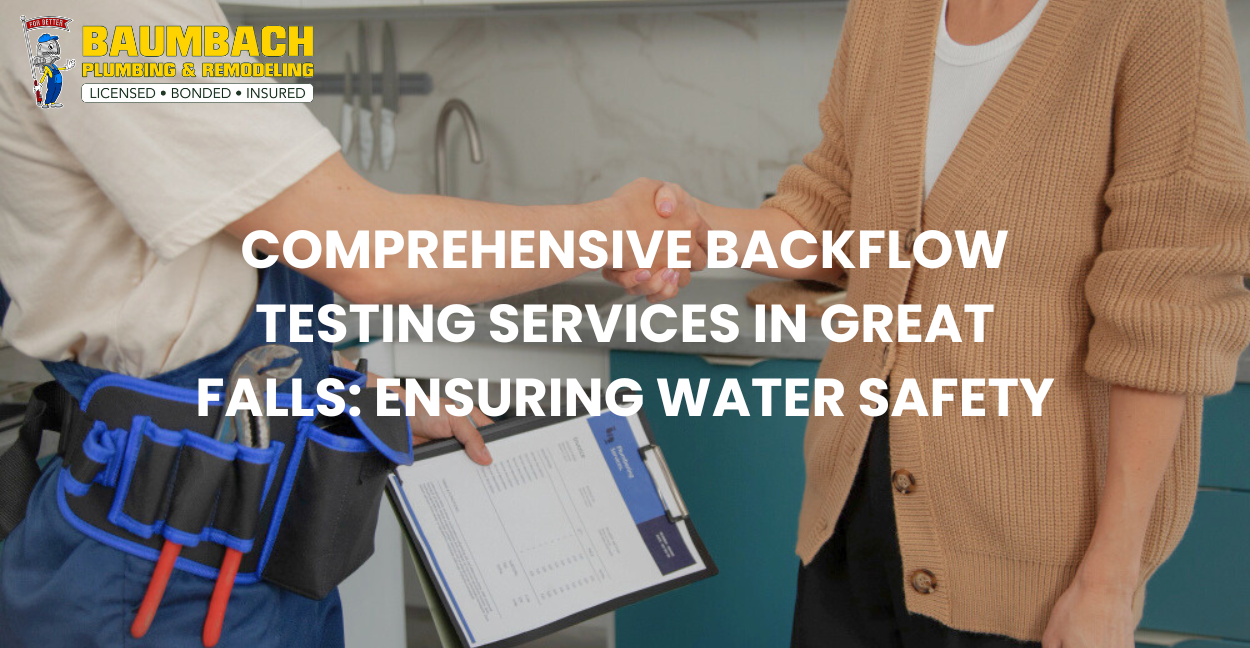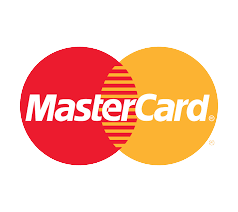Sewer line blockages are a common yet often underestimated concern in residential and commercial properties. These blockages can lead to a host of issues, ranging from unpleasant odors to potential property damage. In this article, we’ll delve into the basics of sewer line blockages, exploring the causes, signs, and preventative measures, DIY tips for clearing minor blockages, also benefits of regular inspections, and some signs of a healthy plumbing system to keep your plumbing system flowing smoothly.
Unmasking the Culprits: Causes of Sewer Line Blockage
Understanding the root causes of these blockages is crucial for preventing plumbing nightmares. We’ll unveil the common culprits behind sewer line blockage, empowering you to take proactive steps in safeguarding your plumbing system.
1.) Foreign Object Intrusion
One of the leading causes of sewer line blockage is the improper disposal of foreign objects. Items like sanitary products, wipes, and excessive toilet paper can accumulate over time, creating stubborn blockages that impede the smooth flow of wastewater.
Preventive Tip
Educate household members on proper waste disposal habits to mitigate the risk of foreign object-related blockages.
2.) Tree Root Intrusion
Nature’s quest for water can lead tree roots to infiltrate sewer lines. As roots grow, they create blockages and can even cause structural damage to the pipes, worsening the risk of a complete obstruction.
Preventive Tip
Regularly inspect and address tree root intrusions, employing professional services to ensure the health of your sewer lines.
3.) Grease and Oil Buildup
Pouring cooking grease and oils down the drain may seem harmless, but over time, they solidify and adhere to the inner walls of sewer pipes. This sticky buildup attracts other debris, resulting in a constricted flow.
Preventive Tip
Dispose of cooking grease in designated containers and refrain from washing oily substances down the drain.
4.) Collapsed or Damaged Pipes
Aging or deteriorating sewer pipes can collapse, leading to blockages. Common culprits include corrosion, shifting soil, and external pressures, all of which contribute to compromised pipe integrity.
Preventive Tip
Schedule regular inspections to identify and address any signs of pipe damage before it escalates into a complete blockage.
5.) Improper Installation
Faulty sewer line installation or poor craftsmanship can result in misaligned pipes or inadequate slope, causing water and waste to pool and create blockages.
Preventive Tip
Ensure that sewer lines are installed by licensed professionals, and conduct quality checks to confirm proper alignment and slope.
By recognizing the causes of sewer line blockage, you hold the key to preserving the health and functionality of your plumbing system. Implementing preventative measures and seeking professional assistance when needed can save you from the headaches associated with blockages. Take charge of your plumbing’s well-being, and safeguard your property from the disruptive effects of sewer line issues. Contact Us for Expert Plumbing Solutions. Learn More About Sewer Line Repair & Replacement.
Detecting Trouble Early: Warning Signs of Sewer Line Blockage
Your home’s plumbing is a vital system that requires attention and care. One of the most critical aspects is your sewer line, responsible for carrying wastewater away from your property. Recognizing the warning signs of sewer line blockage is essential to prevent potential disasters. Let’s explore the key indicators that signify a looming issue, empowering you to take proactive measures and avoid costly repairs.
1.) Slow Draining Fixtures
One of the earliest warning signs of a sewer line blockage is the gradual slowing of drains throughout your home. If you notice sinks, showers, or toilets draining slower than usual, it could indicate an obstruction in the sewer line.
2.) Unpleasant Odors
Foul odors emanating from drains or sewage areas are a clear indicator of a sewer line problem. Blocked pipes trap wastewater, leading to the release of unpleasant gases into your living or working space.
3.) Gurgling Sounds
If you hear unusual gurgling or bubbling sounds coming from drains, it suggests that air is trapped within the sewer line due to a blockage. Addressing this promptly can prevent further complications.
4.) Backups in Multiple Fixtures
Simultaneous backups in different fixtures, such as toilets, sinks, or showers, signal a potential sewer line issue. This widespread problem requires urgent attention to prevent further damage.
5.) Visible Sewage Backup
The most alarming sign is the presence of sewage backup in sinks, toilets, or floor drains. This indicates a severe blockage that requires immediate professional intervention.
6.) Lush Patches in the Yard
Unexpectedly lush and green patches in your yard, especially near the sewer line, may indicate a leaking or broken pipe. This requires swift action to prevent extensive damage.
Don’t wait for a minor issue to escalate into a major problem. By acting promptly and seeking professional assistance, you can prevent extensive damage and ensure the smooth operation of your sewer line. Need Immediate Help? Contact Baumbach Plumbing,
Baumbach Plumbing & Remodeling takes pride in offering a comprehensive suite of plumbing services to address all your needs. Call us now, and our expert plumbers can guide you through it or schedule a visit to assess the issue!
DIY Tips for Clearing Minor Blockages: Keep Your Plumbing Flowing
Dealing with minor blockages in your plumbing system doesn’t always require a call to the professionals. With a bit of know-how and the right tools, you can tackle minor clogs and keep your plumbing flowing smoothly. In this guide, we’ll provide you with practical and easy-to-follow DIY tips for clearing minor blockages, saving you time and money.
1.) Plunger Power
A plunger is a homeowner’s best friend when it comes to minor blockages in sinks, toilets, or showers. Create a tight seal and apply firm, rhythmic pressure to dislodge the clog. Repeat as needed until the water starts draining.
2.) Homemade Drain Cleaner
Mix equal parts baking soda and vinegar to create a natural and eco-friendly drain cleaner. Pour it down the clogged drain, let it sit for 15 minutes, and then flush with hot water. This DIY solution can break down organic material causing the blockage.
3.) Unclogging with a Wire Hanger
Straighten out a wire hanger, create a small hook at one end, and use it to fish out hair or debris causing the blockage in your shower or bathroom sink. This simple method is surprisingly effective.
4.) Boiling Water Technique
Sometimes, a good pour of boiling water can melt away grease or soap scum causing minor kitchen sink clogs. Carefully pour the boiling water down the drain and see if it improves drainage.
5.) Plumbing Snake or Auger
Invest in a plumbing snake or auger for more stubborn clogs. Feed the snake into the drain and rotate the handle to break up and remove the blockage. This tool is especially useful for deeper clogs.
6.) Maintain Grease Disposal Practices
Avoid pouring cooking grease down the kitchen sink. Instead, collect it in a container and dispose of it properly. Grease buildup is a common cause of kitchen sink blockages.
Empower yourself with these DIY tips for clearing minor blockages and maintaining a healthy plumbing system. While these methods are effective for small issues, it’s crucial to recognize when a professional plumber is needed for more complex problems. With the right approach, you can keep your plumbing in top shape and prevent minor issues from turning into major headaches.
Benefits Of Regular Sewer Line Inspections
Regular sewer line inspections may not be on the top of your to-do list, but they offer a myriad of benefits that can save you from potential disasters. Now, we’ll explore the often-hidden advantages of scheduling routine sewer line inspections, highlighting why this proactive approach is a wise investment for homeowners.
1.) Early Detection of Issues
Regular inspections allow for the early detection of potential problems within your sewer line. Identifying issues such as cracks, leaks, or blockages in their infancy can prevent more extensive and costly repairs down the line.
2.) Preventing Major Blockages
Through routine inspections, minor blockages can be identified and cleared before they escalate into major issues. This not only ensures smooth water flow but also prevents the inconvenience of sudden backups in your plumbing.
3.) Extending the Lifespan of Your Pipes
Regular maintenance, including inspections, contributes to the longevity of your sewer pipes. Addressing potential problems early on helps avoid the need for premature replacements, saving you both time and money.
4.) Safeguarding Property Value
A well-maintained sewer system is an asset when it comes to property value. Regular inspections and a documented history of maintenance demonstrate to potential buyers that your home’s plumbing is in excellent condition.
5.) Preventing Health Hazards
Sewer line issues can pose health risks through the release of harmful gases and bacteria. Regular inspections help ensure that your plumbing system is not only functional but also safe for your household.
6.) Saving Money in the Long Run
While some may see inspections as an expense, they are a cost-effective investment. The early detection of issues and preventive measures can save you from the financial burden of major repairs or replacements.
By investing in routine inspections, homeowners can enjoy peace of mind, extend the lifespan of their sewer pipes, and save money in the long run. Don’t wait for a plumbing emergency—take charge of your home’s sewer health today.
Signs of a Healthy Plumbing System
Consistent Water Pressure
Adequate water pressure is a hallmark of a healthy plumbing system. Consistent and strong water flow from faucets, showers, and appliances indicates that your pipes are free from blockages or leaks.
No Unpleasant Odors
A healthy plumbing system should not emit foul odors. If you notice unpleasant smells emanating from drains or fixtures, it may be a sign of blocked or damaged pipes.
Quick Drainage
Efficient drainage in sinks, showers, and toilets is a positive sign. Slow drains or standing water can indicate blockages, which, if left unaddressed, may lead to more significant plumbing issues.
Clear and Clean Water
Clean, clear water from your taps is a visual indicator of a healthy plumbing system. Discoloration or unusual particles in the water may signal issues with the water supply or pipes.
Silent Pipes
A well-maintained plumbing system operates quietly. If you hear banging, clanging, or other unusual sounds in your pipes, it may be a sign of a water hammer or loose fittings.
No Visible Leaks
A healthy plumbing system should be free from visible leaks. Inspect pipes, faucets, and appliances regularly for any signs of water accumulation or dampness.
Frequently Asked Questions
1.) How to find a blockage in a sewer line?
Identifying a blockage in a sewer line involves a systematic approach. Start by checking for slow drainage in sinks, toilets, and showers. If multiple fixtures are affected, the blockage is likely in the main sewer line. Use a sewer camera inspection to visually inspect the pipes for clogs, cracks, or tree root intrusion. Professionals may also perform a smoke test or use dye to trace the source of the blockage.
2.) How to clean a main line sewer blockage?
Cleaning a main line sewer blockage requires various methods. One common approach is using a sewer snake or auger to break up and remove the obstruction. Hydro-jetting is another effective technique, employing high-pressure water to clear the blockage and clean the pipes. For persistent or severe blockages, professional assistance may be necessary, and they might use advanced tools like sewer cameras to ensure thorough cleaning.
3.) How to prevent sewer line blockage?
Preventing sewer line blockages involves adopting proactive measures. Regularly inspect and maintain your plumbing system to catch potential issues early. Avoid flushing non-biodegradable items like wipes, paper towels, and feminine hygiene products down the toilet. Dispose of grease and cooking oils in a proper container instead of pouring them down the drain. Additionally, consider installing drain screens to catch hair and debris, and schedule periodic professional inspections for preventive maintenance.
4.) What are the common causes of sewer line blockage?
Common causes of sewer line blockage include the buildup of grease, foreign objects, tree root intrusion, solidified soap or detergent residue, and the accumulation of non-biodegradable materials.
5.) Can cold weather contribute to sewer line blockages?
Yes, cold weather can contribute to sewer line blockages. Freezing temperatures may cause water in pipes to freeze, leading to pipe damage or blockages. It’s essential to insulate exposed pipes and take preventive measures during winter to minimize the risk of blockages.






